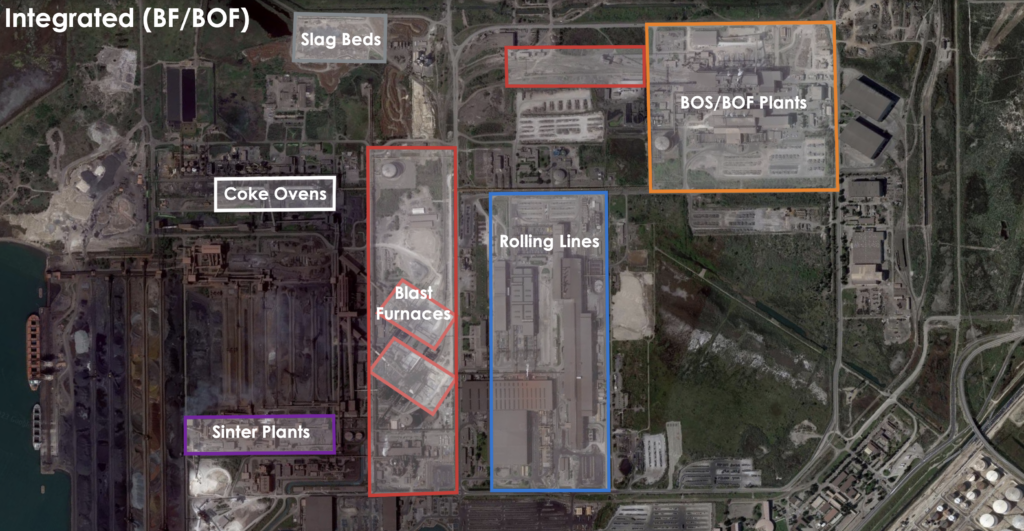Following the real-time movement of every ferrous scrap consignment from space may be a challenging concept but a Singapore-based data specialist claims to do just that. It can also assess individual piles of secondary materials at docks or mills. The data is refreshed every four hours.
This remarkable technology was set out to a fascinated audience during the recent BIR convention in Copenhagen by Atilla Widnell, co-founder and managing director of Navigate Commodities. His company checks the movement and consumption of dry bulk commodities on land or sea using powerful satellite-based technologies and smart algorithms to deliver super-fast market insights.
Widnell told the Ferrous session his company followed the end-to-end supply chain across the world. ‘Our data tends to lead customs data,’ he said, adding that the information performed ‘incredibly well’ against industry benchmarks.

Affordable technology
‘This technology, this data, has existed for the last 10-15 years in oil and gas and they are well ahead of us. It is our responsibility to make that investment and create that information for industry but no-one has done it.
‘The data has always been there but it has become more affordable and we can get more creative with it,’ Widnell asserted, adding that the most recent data meant the company was now tracking the movement of barges carrying ferrous metals across Europe.
Navigate Commodities, with its satellite partner Earth-i, covers 97% of global steel-making capacity and can ‘watch’ the throughput of every integrated plant. ‘You can hold the steel industry to account,’ he told delegates. ‘Think how this technology can serve your interests.’
Using Earth-i images, Widnell showed an ArcelorMittal plant near Marseille in France. Coke ovens, blast furnaces and rolling lines were all visible. Regular overflying from the satellites, coupled with thermal imaging, shows when various parts of the plant are in use and to what capacity. As a result, he said, it was possible to watch smelting activity in almost real time.
Checking stockpiles
Satellites can pick out individual ships at ports and they can be followed around the world by GPS tracking. Increasingly sophisticated algorithms can calculate which materials are piled up on docks or within facilities – and even what commodities they are. This capability was due to be released to the market in a couple of months, the md said.
Widnell explained this data can be aggregated to show how much material individual steelmakers are buying and from whom. But he cautioned that 100% results were not possible and there were margins of error of perhaps 10-15% for steelmaking activity and vessel movements but better percentage for stockpiles.
‘It’s very easy to get bogged down in why the data might be incorrect but when you are looking at it on a national level the margin of error gets watered down. [As an example,] you are looking at whether the UK is over-stocked or under-stocked at any given point of time. You will see a clear, definitive picture of the true status of a country.’
Legality
Asked during the Q&A if the technology was legal, the md said it was: ‘International law applies in space and there is no privacy. The use of drones, however, is illegal with 150 metres of a commercial industrial site.’
Former BIR president Tom Bird wondered if other smart technology could also be used to frustrate the gathering of sensitive information, particularly that showing stocks held in yards.
Widnell joked that yards could use ‘the oldest technology of all’ – and build roofs or use tarpaulins.
‘There are physical risks in space and policies could change; things could become more private. I would hope the industry doesn’t use lobbying groups to prevent us providing this information.
‘You are limited only by your imagination. If you really wanted to do it [prevent observation], you could probably find a way to do it,’ he concluded.
Worldwide now 1 229 shredders
The discussion was followed by the regular shredder session in which Alton Scott Newell III of Newell Recycling Equipment gave his annual summary of the sector. He said there were currently 1 229 shredders in the world, 350 of which were in China, two fewer than the US total.
BIR’s new trade and environment policy officer, Daniel Pietikainen announced the launch of the organisation’s latest safety survey for shredders over 1 000 HP, saying it would be the most comprehensive so far. He urged members to take part.
Two presentations considered the use of innovative LIBS technology using lasers in shredding and sorting. Rick Cortois of Austin AI said: ‘Only recently has the speed of high-powered lasers, combined with the date acquisition and processing speeds of computers, met the demands of processing the tonnes per hour of scrap needed for the re-melters.’
Don't hesitate to contact us to share your input and ideas. Subscribe to the magazine or (free) newsletter.



